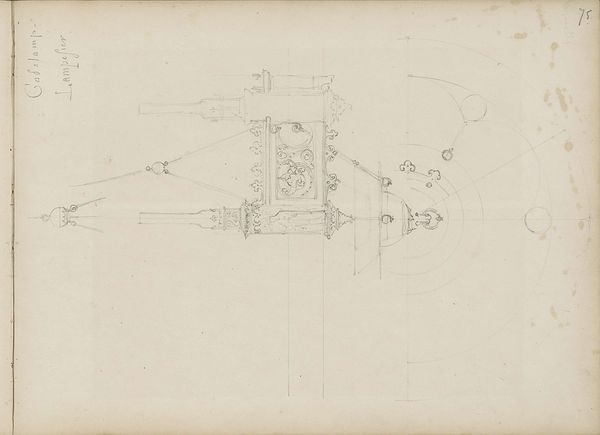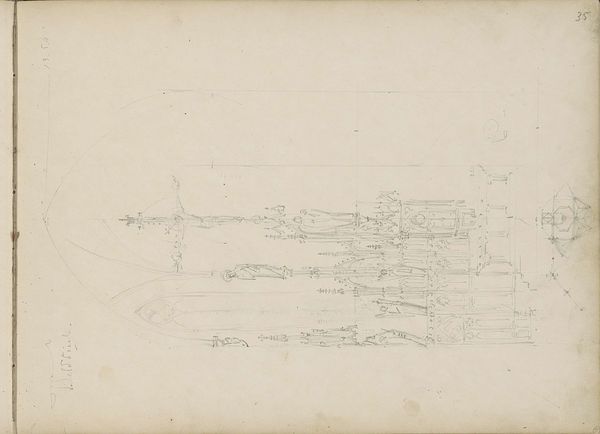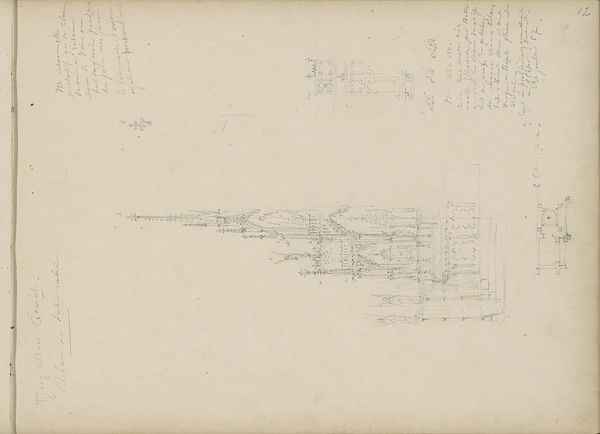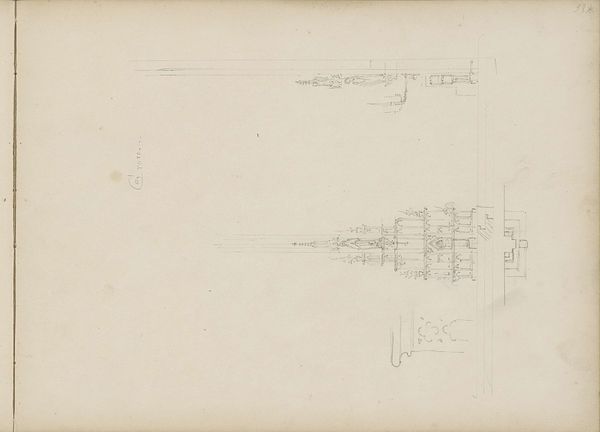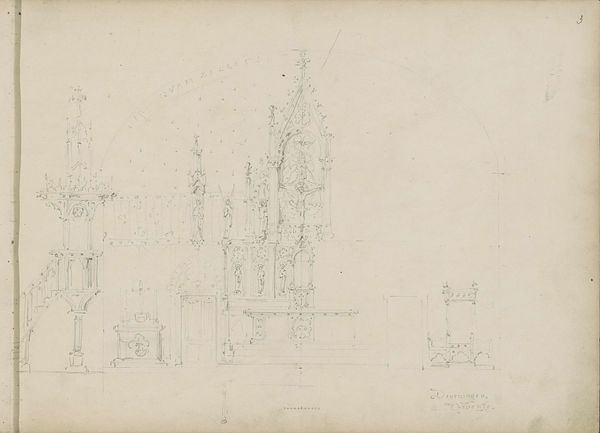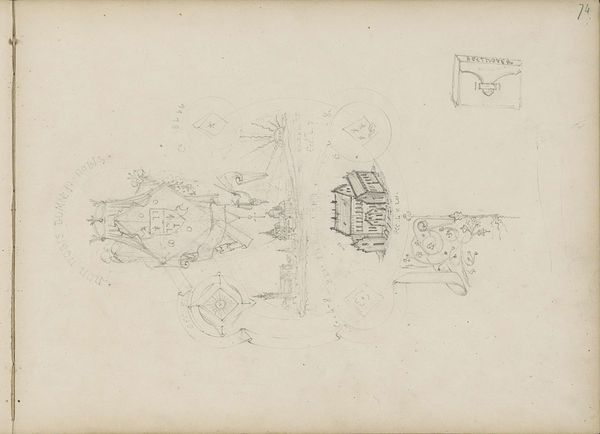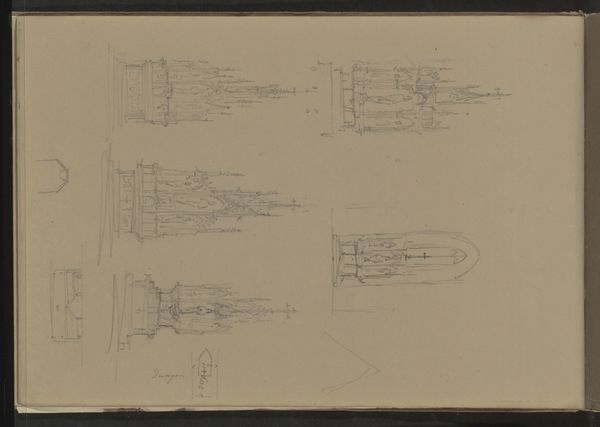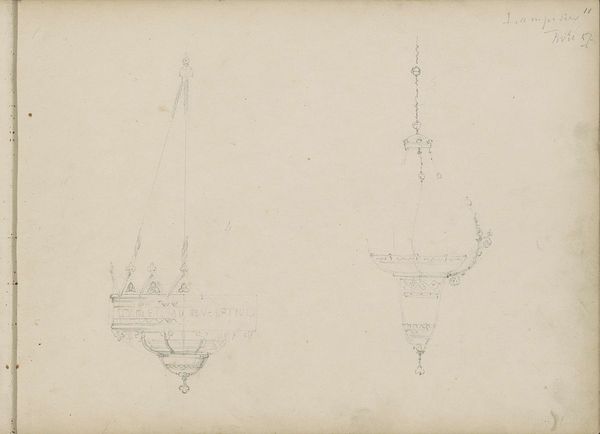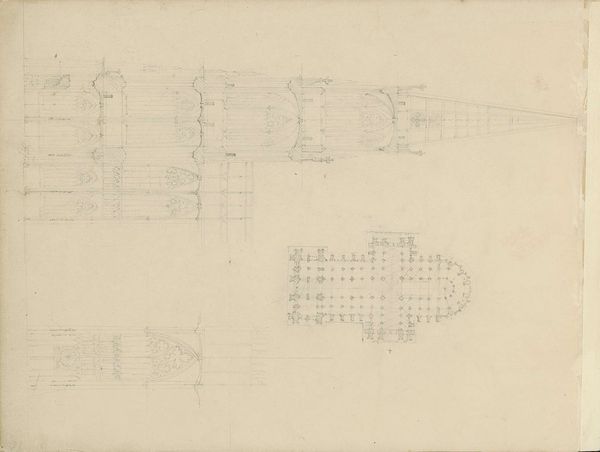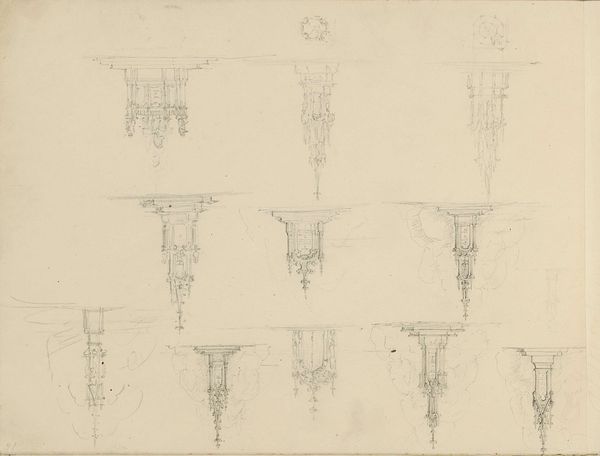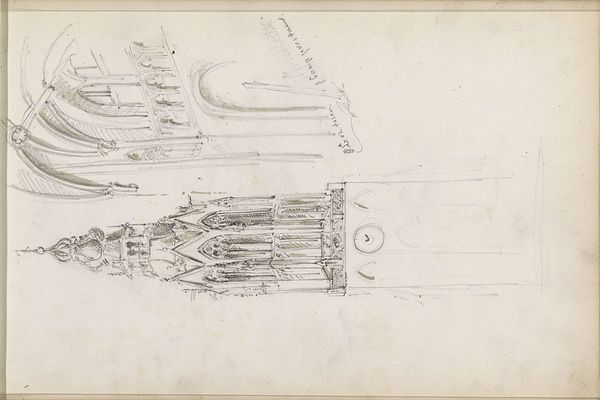
drawing, paper, pencil, architecture
#
drawing
#
paper
#
form
#
pencil
#
academic-art
#
architecture
Copyright: Rijks Museum: Open Domain
Editor: This is Pierre Cuypers' "Onze-Lieve-Vrouwe troon," a pencil and paper drawing from 1857-1859. I find the architectural detail quite impressive, especially considering it’s a preparatory sketch. The precision with which Cuypers depicts the form makes me wonder about the inspiration behind it. What catches your eye when you look at this drawing? Curator: Oh, this takes me back to my backpacking days, sketching cathedrals across Europe... There's such an earnest quality here, isn't there? Look at the meticulous rendering, the desire to capture the divine in precise lines. I'm reminded of Viollet-le-Duc, Cuypers' contemporary. He too believed in this kind of 'rational' Gothic revival. Do you notice how the drawing almost deconstructs the throne into manageable geometric parts? Editor: Yes, I see that now. Almost like an exploded diagram you'd find in an instruction manual. It does remove some of the... mystery? Curator: Perhaps, but isn't that the spirit of the age? To understand the universe, we dissect it! Cuypers is really saying, "God is in the *details*... which I will catalogue." Do you see a kind of loving attention to structural integrity and symmetry. I think it shows great reverence through architecture, he felt deeply, almost emotionally connected, through it. What do you make of that now? Editor: That makes more sense; seeing the reverential intention explains some of my hesitation regarding how ‘cold’ I initially found it. It has warmth behind it now. Curator: Exactly! Sometimes the most devoted expressions hide behind rigorous form. I may even use that in a conversation one day myself!
Comments
No comments
Be the first to comment and join the conversation on the ultimate creative platform.
